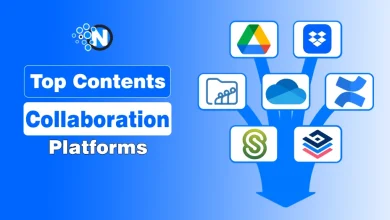Top Challenges of Managing Remote Teams and Possible Solutions

Working from home and hybrid work models are no longer temporary, and this work model is being utilized by many companies around the world. Unfortunately, while remote work models have several benefits, most managers have to deal with a few challenges while managing remote teams.
These challenges are of different types and stop the workforce from working at their peak productivity level. Understanding these challenges is important so that your company can deal with them properly. In this article, I am going to discuss some top challenges that almost every team faces in a remote workplace. I’ll also discuss the solutions for each problem so that you can tackle it well. Let’s start.
Top Challenges of Managing Remote Teams:
The number of often faced by the remote teams employers or mangement team while streamlining the operations. I along with describing these challenges have also highlighted possible solutions with these challenges.
1. Communication
Clear communication is at the center of the success of remote teams. Remote work models make it difficult for managers to gather employee input on various work-related engagements. Communicating remotely also makes it challenging to utilize open discussions.
It’s even more challenging if you rely on traditional emails, which are overly formal and don’t facilitate quick conversations. In a similar way, conducting meetings virtually also hinders the communication procedure. Since everyone is not with each other physically explaining ideas and delivering information on different topics becomes difficult.
The Solution:
Remote managers can overcome communication challenges by creating dedicated communication platforms. They should ensure that departmental employees, team leaders, and freelancers working on the same projects communicate effectively at all times.
Internal communication tools such as Slack are useful for solving this challenge. Regardless of the communication tool of choice, ensure that it enables effective two-way communication and that remote teams don’t feel isolated.

2. Tracking Employee Productivity
Tracking employee productivity in a physical workspace is simple, but knowing what your remote team has accomplished is a whole other story. You cannot physically see which team member is working properly and which one is not. Since everyone’s working from their homes or any other remote sites, having a manager to supervise them is impossible.
The lack of productivity tracking can hurt an organization in many ways. Not only does it reduce the production of products or services, but it also reduces their overall quality. It results in a decline in the brand reputation which ultimately leads to the company’s failure.
The Solution:
Remote managers should find ways of managing their remote teams’ productivity without breaching privacy or micromanaging employees. Determining if your remote employees are being underutilized or overworked might prove challenging. Still, there are some useful ways you can use to track the productivity of your employees.
For instance, you can set metrics outlining the tasks that employees should complete every day or week. Productivity apps make it easy to monitor employee productivity and prevent burnout resulting from diminished work-life balance.

3. Company Culture Development
Building the right company culture takes time and requires hiring suitable candidates. In physical offices, company culture often takes shape without much influence from managers. However, this can’t work with remote teams. You will need a focused and intentional effort to develop a company culture with remote teams.
Having a proper company culture is more important than many people think. It helps build a proper brand reputation which differentiates the company from the competitors. It also gives employees a sense of belonging which helps get the most out of their potential. Building such a culture with a remote model is nearly impossible since everyone is connected with each other virtually and not physically.
The Solution:
Like other business initiatives, creating a company culture with remote teams requires a well-laid-out plan that starts from the top.
For instance, if you want a culture that embraces open communication, introduce a “virtual open door” policy. This allows remote teams to communicate openly with everyone, including CEOs. For a fun company culture, schedule outdoor events or virtual movie nights.

4. Lack of Team Collaboration
In the current remote and hybrid models, helping teams work with each other is difficult. Without proper in-person interaction, handling mutual projects is a very complex task for employees. They might struggle with communication, giving suggestions, or assigning roles to all the team members.
Besides being difficult, team collaboration in a remote environment is risky as well. Any mistake can be fatal and teams might end up messing up the project. So, it is essential to deal with the lack of collaboration in order to have a successful remote working system.
The Solution:
The best way to handle this issue is by using online collaboration tools effectively. There are several tools available on the Internet that are designed to let teams work on projects easily. Examples of these tools are Microsoft Teams and Asana.
Besides the utilization of these tools, you need to conduct training sessions in order to educate the employees to work and collaborate effectively.

5. Personal Distractions
It is true that working from home helps give employees the freedom to work in their own way. However, this thing can sometimes backfire as well. While working from home, there’s always the risk of getting involved in personal distractions. Employees who work from home usually stay involved with their families and even friends.
Such distractions stop them from working with focus which reduces their overall productivity. The lack of awareness of employees results in mixing both their personal and professional lives.
The Solution
Solving the challenge of personal distraction is a little tricky. It is an issue that only employees can solve themselves. Still, you can help them tackle this issue by training them to create clear boundaries between their personal and professional lives. Also, blocking out specific time for professional work will also help deal with this issue.

Endnote
Remote working models are becoming more and more common these days. Businesses are creating a virtual workplace where employees can connect with the company from anywhere they want. It brings some challenges as well when it comes to managing the remote teams.
These challenges are related to not being able to communicate well and monitor productivity in a better way. To tackle these issues, businesses should be flexible and try out the mentioned solutions to increase their work productivity.




